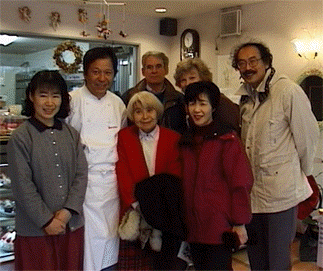 -->> VHS; running time: 25 minutes
| Tracing the lives of five people who lived
through the Great Hanshin Earthquake of
5:46 a.m. on January 17, 1995, Kobe, the
First Year After is about survival. How is it
that some people successfully deal with
major disruptions to their lives and others
become stressed out? Produced by the
award-winning team of Dave McLane and
Sueko Tani, the video lets the five people
tell their stories directly to the camera,
providing a moving viewing experience for
those interested in real-live drama.
Available from Kay Vreeland, who appears
in the video, or from Dave McLane.
|



 Go BACK to Kay's Home Page
Go BACK to Kay's Home Page